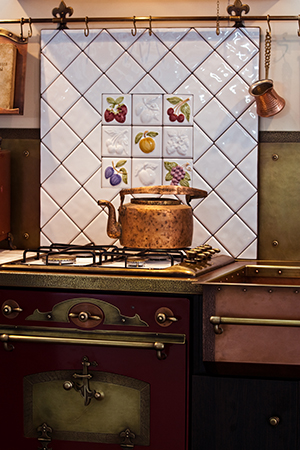“A lie can travel half way around the world while the truth is putting on its shoes” – Mark Twain
Mark Twain couldn’t know how his prophecy would come true in the internet era. Have you ever wondered how fast misleading information, pseudo-science and gossip circulate around the globe when you need years of argumentation, research and peer review for real and science-based information and guidelines? There is no place where this is more obvious than in the natural and green beauty community.
Today we’re talking specifically about one small myth in the DIY skincare community that has found its way into many small artisan businesses: the Heat and Hold method for making emulsions. This method, as instructed on multiple skincare blogging and teaching websites, requires you to heat your oil phase and your water phase to approximately 70-80 degrees Celsius and then ‘hold’ the two phases at these temperatures for 20 minutes.
Why heat and hold your emulsions?

Now, what I dislike intensely in scientific matters (and let’s be clear here – formulating stable emulsions requires an understanding of science) is “I have always done this and this works for me”, or “I have been told to do this and everybody else does the same”. If everybody had this mind-set, we would probably still be living in caves and wearing animal skins around our bodies (my apologies to all our vegan readers).
Every complicated and scientific phenomenon should have a simple and easy to understand version. Even Einstein’s theory of relativity has an easily understandable version for laypeople. But as of yet, nobody has been able to explain to me why they heat the water and the oil phase to 70 degrees and keep both phases at that temperature for 20 minutes before blending them?
Extrapolating One Emulsifier to Many
Before being led to write this blog post, I started to doubt myself. Maybe something has changed since I left university and academic research a few years ago. Maybe I’m not aware of new techniques in the industry. Maybe what I’ve learned as a chemist and have been doing all these years is wrong and somehow it was my blind luck that I have created acceptable and stable emulsions.
I have more than 500 sample formulations from suppliers of raw material in my archive, so I went back to re-read them. Except for two single cases (a specific kind of emulsifier), where the suppliers mentions specifically to heat the water phase for some 20-30 minutes so that the emulsifier which is being added to the water phase completely hydrates, there was no other procedure even similar to ‘heat and hold’ myth.
I even went back to my friends in the industry and asked them whether they are aware of such principle? The answer was clear – this depends on the emulsifier and the formulation, but this is not a general rule and rather an exceptional case.
So in the end I tried to read and understand the article everyone kept sending to. I tried re-reading and re-digesting it, sentence by sentence. The arguments, quite complicated and sophisticated, make the layperson believe in them and accept them without any doubt and discussion.
I’m sure this procedure was written for a certain type of emulsifier and a certain case but unfortunately it has been expanded to all emulsions and is now one of the “commandments” of emulsion making in the DIY and artisan skincare formulation and teaching community.
6 Reasons why the ‘Heat and Hold’ Method is a Myth
I’m now going to walk you through the 6 reasons that this ‘heat and hold’ method truly is a myth. Once you’ve read my 6 reasons, please feel free to leave me a comment below. If you have other proof that ‘heat and hold’ is the undisputable principle in emulsion-making, I am happy to hear it and I encourage you to get in touch.
Please consider the fact that I’m writing this post for artisan manufacturers and small business – a majority of whom, if not all, create natural and organic cosmetics. Whatever your interpretation of “natural” might be, here I’m referring to emulsions made with plant based, Polyethylene Glycol (PEG)-free emulsifiers, plant oils, plant based and PEG-free esters, hydrosols as well as lipophilic and hydrophilic plant extracts as the main ingredients of natural cosmetics. Natural cosmetics by our definition do not contain any PEG-derivatives in any of the ingredients (emulsifiers, emollients or any other constituent of the recipe), silicones, propylene glycol, paraffin or mineral oil and mineral oil-derived ingredients.
Myth: By heating both oil and water phases to 70˚C, you will lower any possible contamination risk and kill the ‘nasties’.
Objection 1: You may kill microorganisms, but you will not kill their enterotoxins.

According to CDC, the Centre for Disease Control and Prevention, you can get rid of microorganisms by: Bringing the water to a rolling boil for one minute (or at elevations above 6,500 feet, boil for three minutes).
Let us have a look at the main cosmetic contaminants and check whether you can really get rid of them by heating your ingredients for 20 minutes at 70 degrees. Keep in mind that almost 50% of contamination is caused after manufacturing and filling – either by preservative failure, by inappropriate closure or by your customer contaminating the product. (Want to learn how to preserve your products correctly naturally? Enrol for our Certificate in Natural Cosmetic Preservation).
Most of the contaminants in cosmetics are mesophilic, meaning they grow at temperatures between 20-45 oC. They will not survive the heating at 70oC but their enterotoxins would easily survive temperatures even higher than 100 degrees.
Two of the most frequent sources of cosmetic contamination are Staphylococcus aureus and his cousin Staphylococcus epidermidis. Testing Staphylococcus aureus is even mandatory in preservative challenge tests in all different protocols.
According to the Public Health Agency of Canada Staphylococcus aureus can grow in a pH of 4.2 to 9.3 and in salt concentrations of up to 15%. Their enterotoxins are resistant to temperatures that would destroy the bacilli. They are sensitive to dry heat treatment of 160-170oC for at least an hour, but not to moist heat treatment.
Objection 2: the ‘Heat and Hold’ method will not kill thermophilic microorganisms.
This is not the end of the story. Thermophilic and hyper-thermophilic microorganisms, which come from the earth and accompanying almost all natural extracts, plant material (gums and starch) as well as clays and muds do not care if you heat them for 20 minutes at 70 oC. In contrast, some even have their optimal growth temperature around 65 oC. These microorganisms pose a big problem in the food industry because most of them can even survive pasteurisation[i],[ii].
But since this is not the main objective of ‘heat and hold’ and you can get rid of the ‘nasties’ by adding the right concentrations of the right preservative, let’s accept for now that while the ‘heat and hold’ method will get rid of some microorganisms, it certainly will not make your product any safer for your customer as long as you follow proper cosmetic Good Manufacturing Practice.
Myth: Critical micelle concentration requires that both phases are the same temperature when we add them together. We need phase inversion to create a stable inversion.
The critical micelle concentration (CMC) is defined as the concentration of surfactants above which micelles form and all additional surfactants added to the system go to micelles. A micelle is an aggregate of surfactant molecules dispersed in a liquid colloid.
Objection 3: the Critical Micelle Concentration is completely irrelevant in emulsion-making.
This is the most irrelevant part of the argument. I don’t want to go into details of CMC because unless you’re a physical chemist, it would be extremely boring to you. Those of you who want to read about CMC in detail are kindly invited to search basic books in physical chemistry and colloid chemistry or to download this amazing free e-book from Professor Steven Abbott. In short:
- CMC is critical micelle concentration and not the critical micelle temperature.
- Apart from that, the CMC of surfactants is in mill molar concentration range and is only significant to researchers working in that concentration range. In our real formulator life, we’re working with concentrations hundreds of times higher than CMC. It means that no matter which emulsifier or surfactant we’re working with and no matter which temperature we’re working in, (usually 20-80 degrees centigrade), our surfactants (emulsifiers) have a concentration 100 times more than their CMC and there is no need to heat the water and the oil phase for 20 minutes so that OUR surfactants reach CMC and we can have perfect micelles.
- Micelles are completely irrelevant in emulsion making. Micelles are aggregations of surfactants in water. In emulsion making, we want the surfactant (emulsifier) to wrap around the inner phase. Depending on the emulsion, this will either be oil droplets (O/W emulsions) or water droplets (W/O emulsions). Our system doesn’t consist of water and surfactant, we have oils, alcohols, emollients, electrolytes and many other components even in the simplest emulsion and that makes the CMC completely useless in emulsion making.
Myth: If our oil phase is at 70˚C and our water phase is at 100˚C (boiling point of water in Celsius), then they may not come together properly.
Objection 4: achieving the same temperature for both phases in emulsion making has nothing to do with the Critical Micelle Concentration.

This is nonsense. It is a very simple physical principle that requires that both phases have almost the same temperature as you blend them together and it has nothing to do with the CMC or Kraftt temperature or emulsification.
Suppose one of your oil phase ingredients has a melting point between of 75 degrees. What would happen if you add the oil phase (which you have heated to 78 degrees) to the water phase (which is at room temperature)? Exactly. Those ingredients with a melting point above room temperature would solidify in water without having any chance to participate in the emulsification. As easy as that.
In most cases, all ingredients in your water phase are liquid at room temperature, but you have to heat your water phase to almost the same temperature as the oil phase to avoid any solidification of high melting point components. Nobody heats up the water phase “just for fun” to 100 degrees C.
In addition to that, in modern emulsifying systems, you don’t even need to heat all of the water phase and oil phase. These emulsifying systems focus on sustainability and low-energy consumption. It doesn’t take a huge amount of time and energy to heat the oil and water phases and cooling down the emulsion when you’re making a 100g batch, but imagine the energy and time required to heat up the ingredients for a 10 tonne batch and then the energy and time needed to cool down the prepared emulsion. IMWITOR ® 375 is one of these examples. You heat up your oil phase with only 50% of the water phase and add the rest of the water phase at room temperature after emulsification. You don’t need to ‘heat and hold’ anything at all.
Myth: If our oil phase is lower than 70˚C, we might see a very unstable emulsion.
Objection 5: this would rule out all cold process emulsifiers.
It appears to me that the followers of this hypothesis have never heard of or worked with cold-process emulsifiers. As I mentioned before, in the modern cosmetics industry, energy consumption and sustainability is a very important factor.
There are now dozens of sustainable, green, PEG-free and natural emulsifiers available where the focus lies on less energy consumption – there is no need for heating up and cooling down either phases. You only have to heat the oil phase if you have solid ingredients, otherwise the oil phase and water phase are blended at room temperature without any need to ‘heat and hold’ the ingredients. These emulsifiers will not lead to an unstable emulsion that will separate over time.
Fact: We need to reach the Phase Inversion Temperature for ethoxylated emulsifiers to achieve emulsification.
Objection 6: This argument is irrelevant for natural and organic cosmetics where ethoxylated (PEG-derived) emulsifiers wouldn’t be used.
The argument made for ‘heat and hold’ further covers the concept of Phase Inversion. Non-ionic emulsifiers such as Polawax or e-Wax NF are water soluble at low temperatures and oil soluble at higher temperatures. At the lower temperatures, the Polawax forms an oil-in-water emulsion. At the higher temperatures, the Polawax forms a water-in-oil emulsion. Creating a water-in-oil emulsion that will eventually turn into an oil-in-water emulsion is a concept called phase inversion.
Phase inversion Temperature (referred as PIT in articles and journals) is a concept that was first introduced by Shinoda from Yokohama National University in the 1960s[iii]. Phase inversion refers to a phenomenon that occurs when an agitated oil-in-water emulsion reverts to a water-in-oil emulsion, and vice versa. The full discussion about the PIT and its applications in pharmacy, oil industry, cosmetics and food industry is beyond the scope of this discussion.

This principle is ONLY valid and applicable for PEG-derivatives (ethoxylated ingredients). Indeed this is the only part of a series of the ‘heat and hold’ argument which I agree with. But unfortunately all of the followers of the ‘heat and hold’ hypothesis have overseen or neglected this argument. This means that the formulators in the natural artisan community, who are not used PEG-derived (ethyoxylated) ingredients or emulsifying systems, are ‘heating and holding’ for no reason.
For some specific emulsifiers, it is even recommended to avoid the addition of the hot water phase into the hot oil phase while stirring. This “inverse” processing is likely to lead to the formation of a water-in-oil emulsion (recognisable by its high viscosity). During the cooling process, this emulsion converts to an unstable oil-in-water emulsion with a large particle size. If you have no other option than to add the water phase to the oil phase, then add the water phase without stirring and then after all of the water phase is added, start stirring and then homogenising.
Why you shouldn’t ‘Heat and Hold’ your natural emulsions

In some specific cases, and only in those specific cases, you may indeed need to hold your phase to fully hydrate a gum or a certain emulsifier. This is often the case with lecithin-derivatives, but your supplier will mention that in the application instructions if it is necessary. If this is not recommended by your emulsifier supplier, don’t torture your precious natural ingredients for a principle which is not even valid for your system.
Conclusion:
If you’re working with non-ethoxylated, PEG-free emulsifiers:
- You cannot get rid of ‘nasties’ by using the ‘heat and hold’ method. You may destroy mesophilic microorganisms but their enterotoxins will still remain intact. You may even promote the growth of thermophilic microorganisms which may be available in your natural cosmetic ingredients.
- There is no need to ‘heat and hold’ your ingredients at all. The Phase Inversion Temperature is only applicable to PEG-derivatives, which you won’t be using in natural cosmetics.
- Which temperature should you heat your ingredients to? It depends on the melting point of the ingredients. If all of your waxes, alcohols, fats and emulsifier melt at temperatures around 60 degrees, then there is no need to heat up the phases to 70 degrees. If one of your ingredients melts at 80 degrees then you shall heat up your phases to 80 degrees. Heating to 70 degrees will not help you in this case.
- Most modern emulsifying systems work perfectly at room temperature. If all your ingredients are liquid at room temperature (no solid waxes, no butters, no fats) then there is no need for heating them up at all.
- Some modern emulsifying systems work with a cold-hot-hot principle. It means you don’t need to heat up all of your oil phase and your water phase. You can partially heat them up and then cold blend the rest of your ingredients.
- PIT, or phase inversion principle, is valid for ethoxylated surfactants. Do not heat up your ingredients to degradation if you’re not using ethoxylated emulsifiers (which you hopefully are not if you’re making natural claims for your cosmetics).
Have you used the ‘heat and hold’ method? Have you tried the same formulation with using the ‘heat and hold’ method and did you compare the results? Leave us a comment below.
References
MPI of Colloids and Interfaces, Golm
[i] Richmond, B., and M. L. Fields. “Distribution of thermophilic aerobic sporeforming bacteria in food ingredients.” Applied microbiology 14.4 (1966): 623-626.
[ii] Marchant, Roger, et al. “The frequency and characteristics of highly thermophilic bacteria in cool soil environments.” Environmental Microbiology 4.10 (2002): 595-602.
[iii] Shinoda, Kozo, and Haruhiko Arai. “The correlation between phase inversion temperature in emulsion and cloud point in solution of nonionic emulsifier.” The Journal of Physical Chemistry 68.12 (1964): 3485-3490.
Leave us a comment

Dr. Elham Eghbali was Formula Botanica’s Cosmetic Chemist between 2014 and 2018. She has over 20 years’ industry experience and is based in Bavaria, Germany. To read more about Formula Botanica’s team, visit our staff page.


























